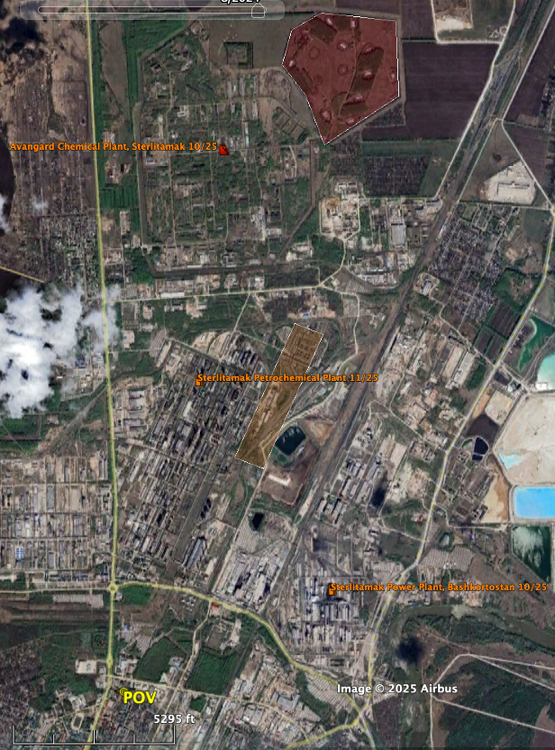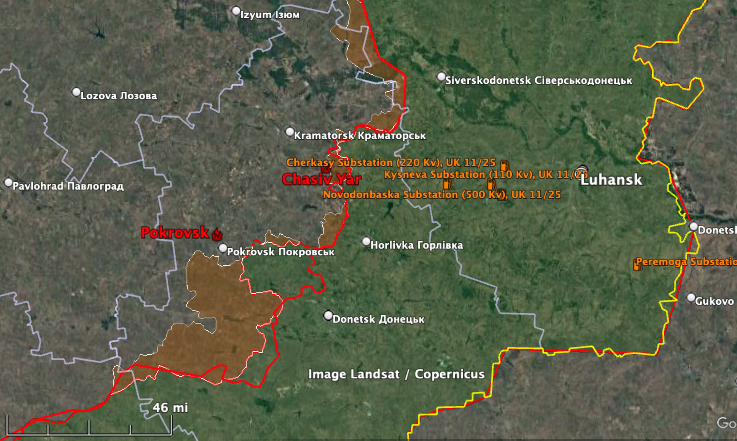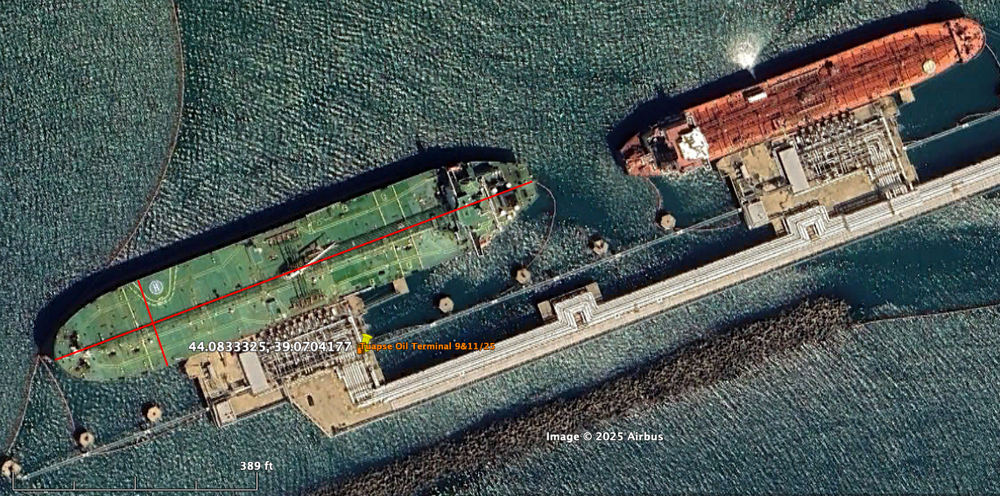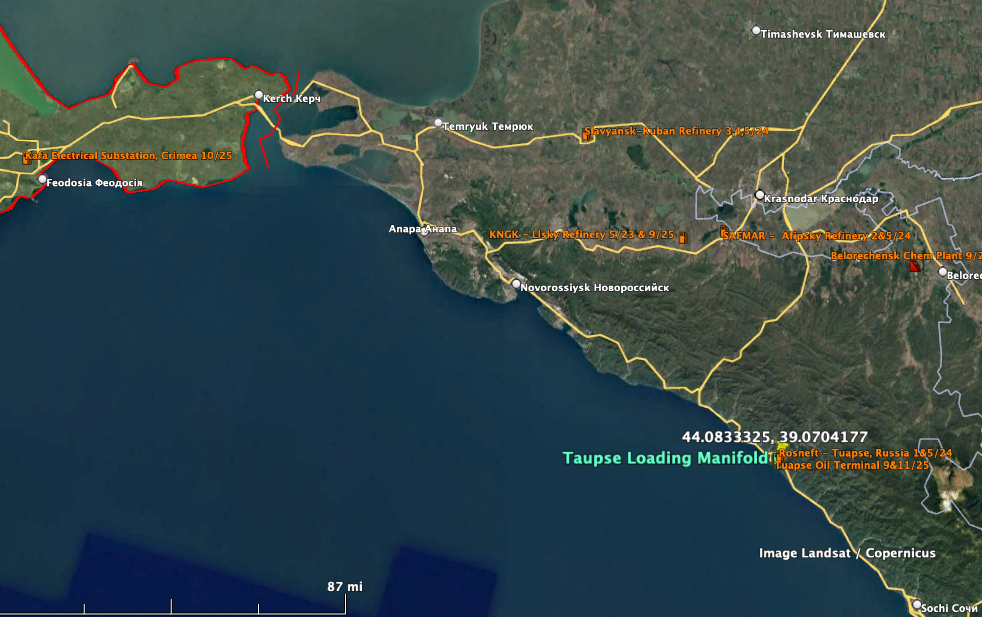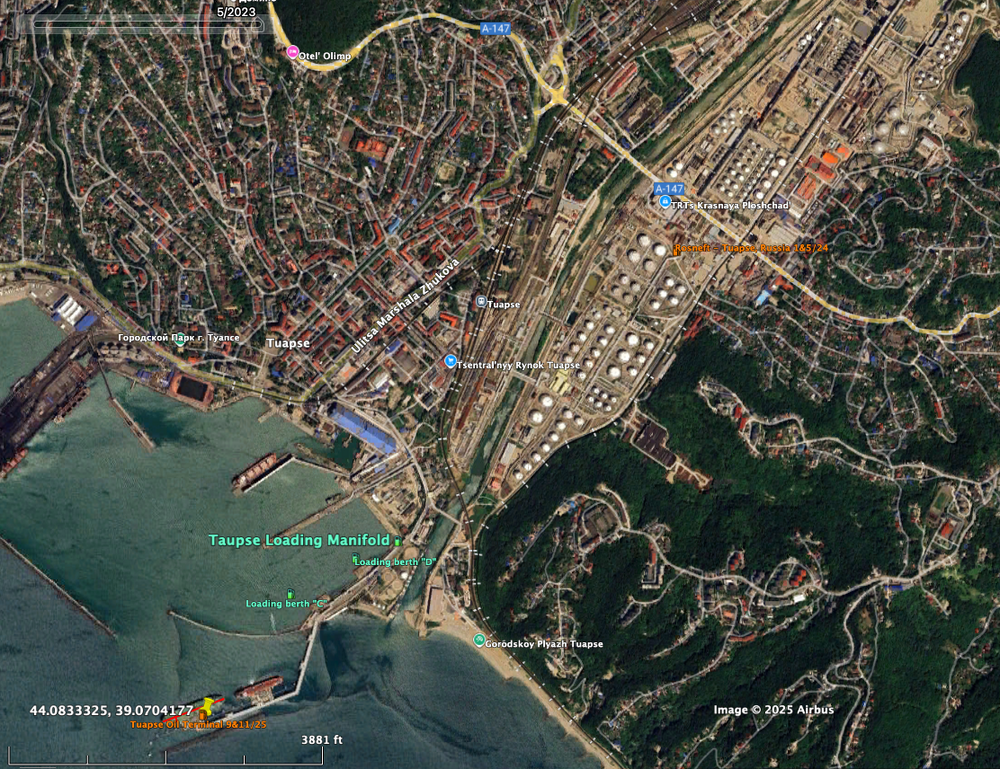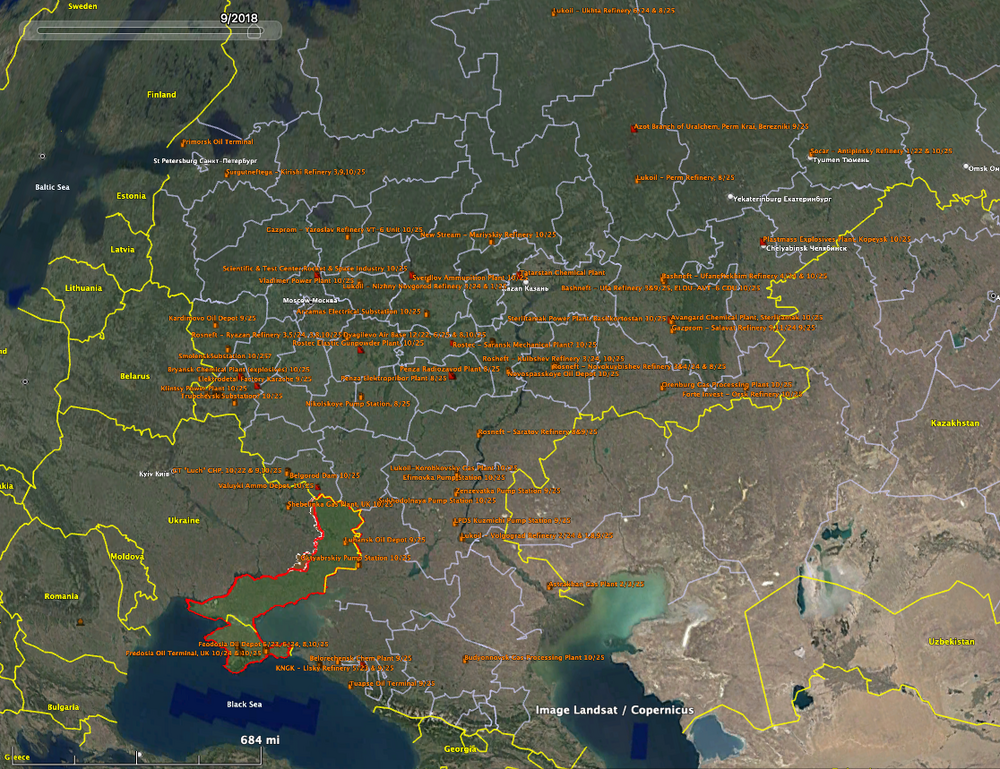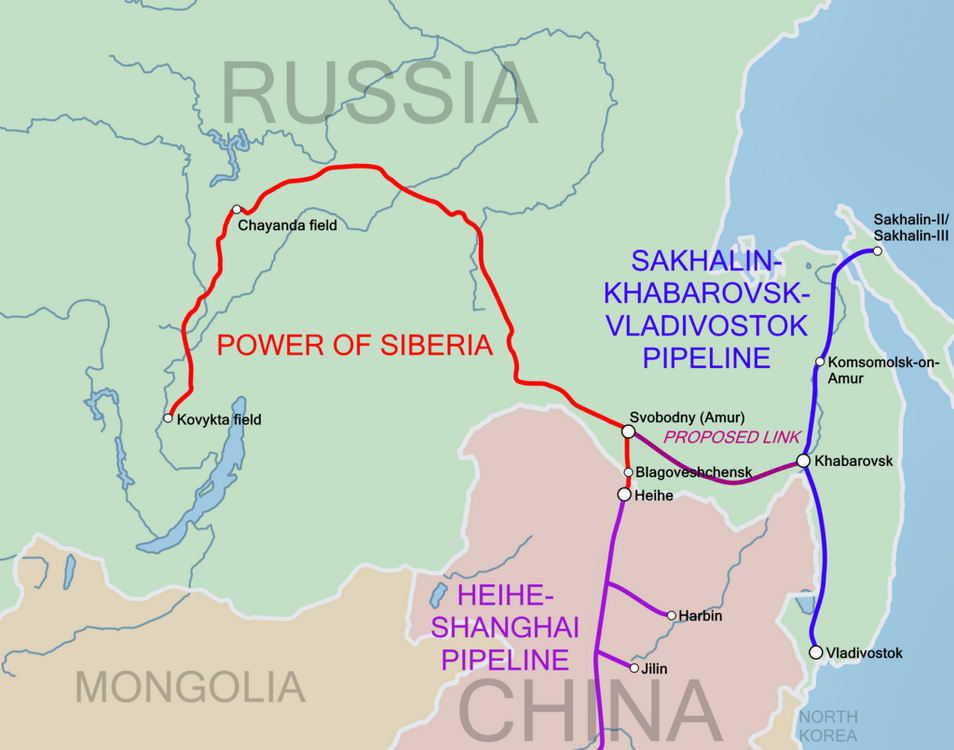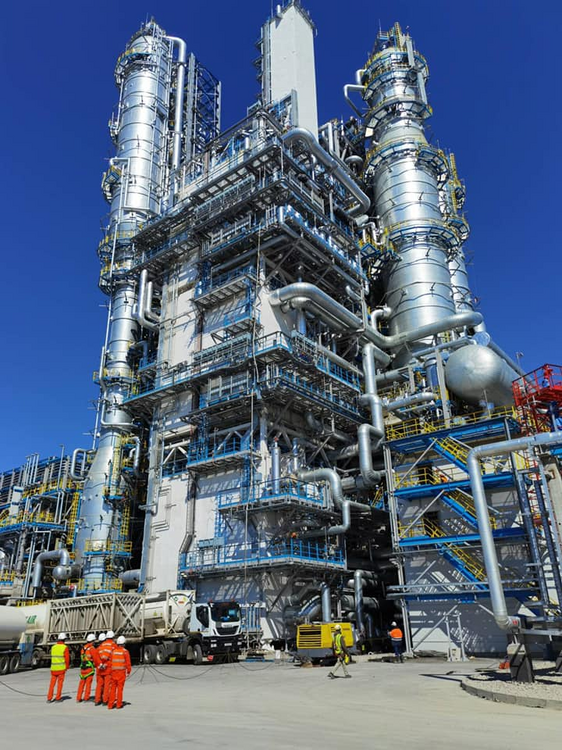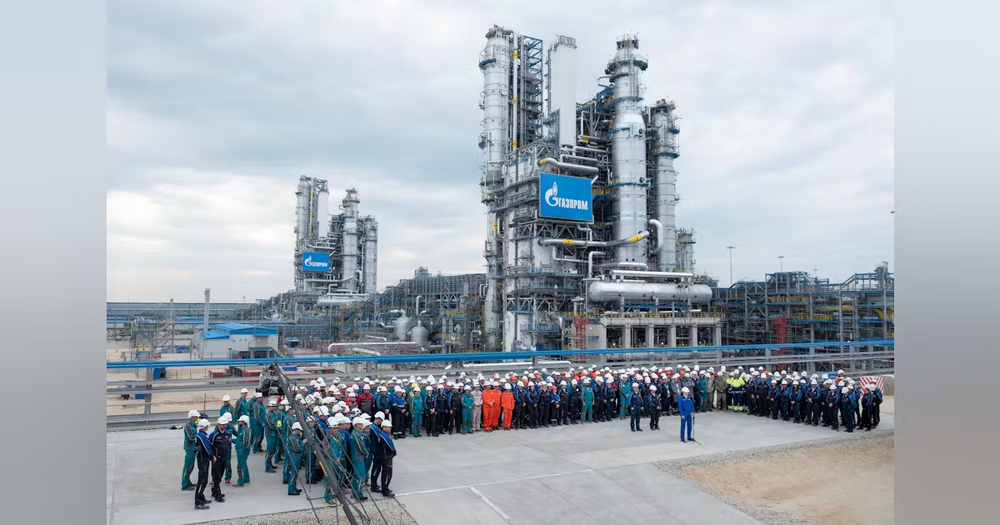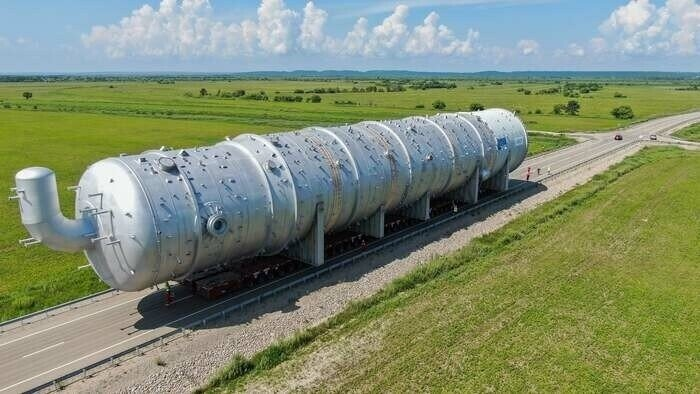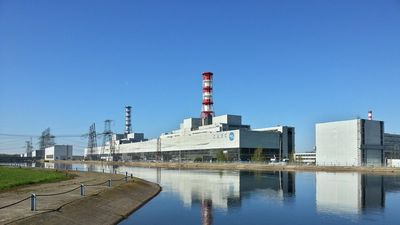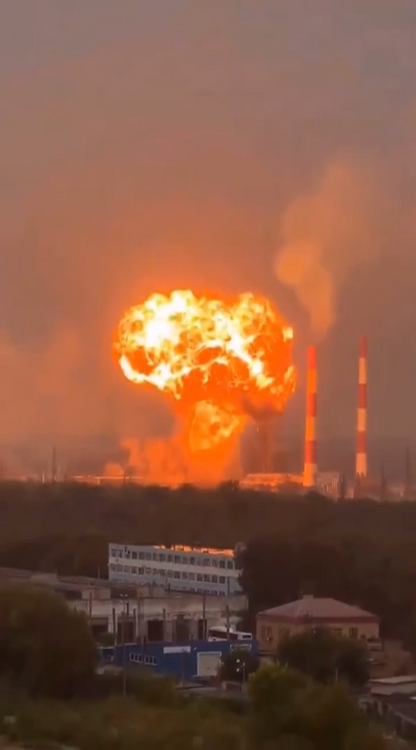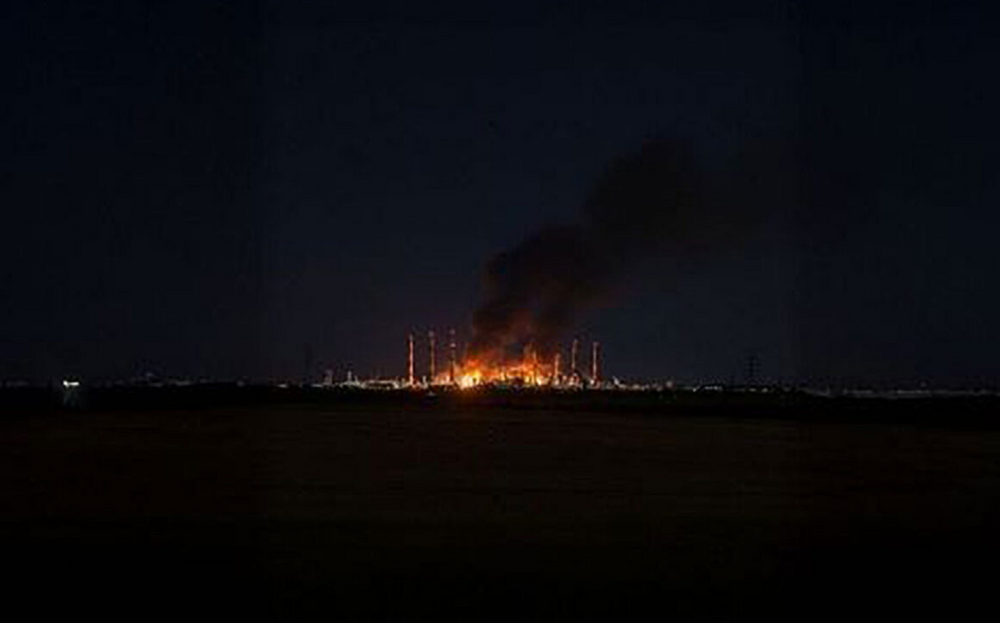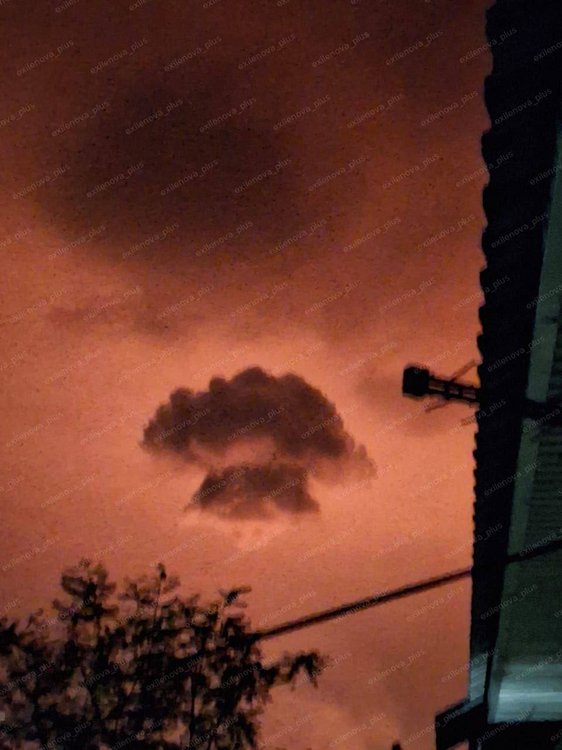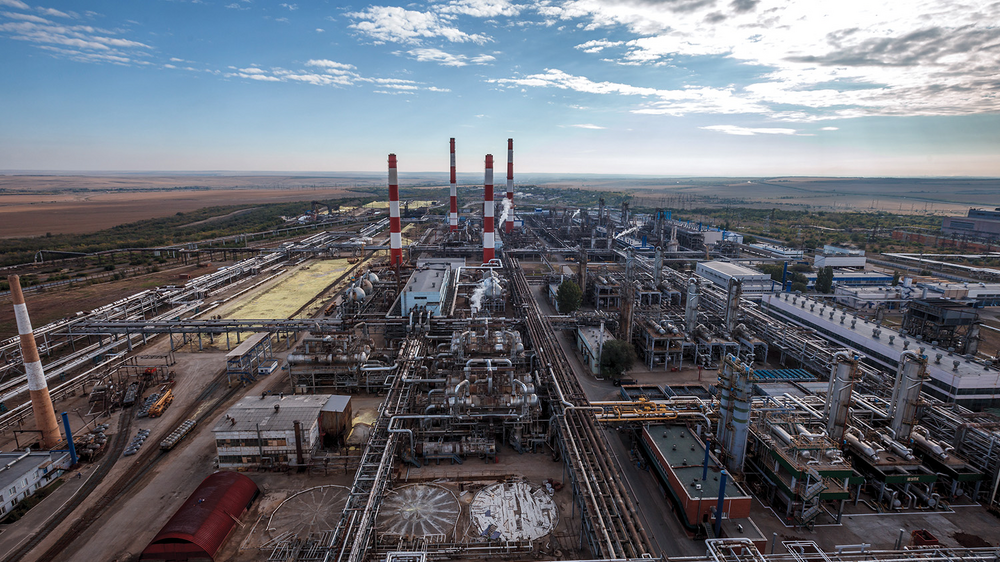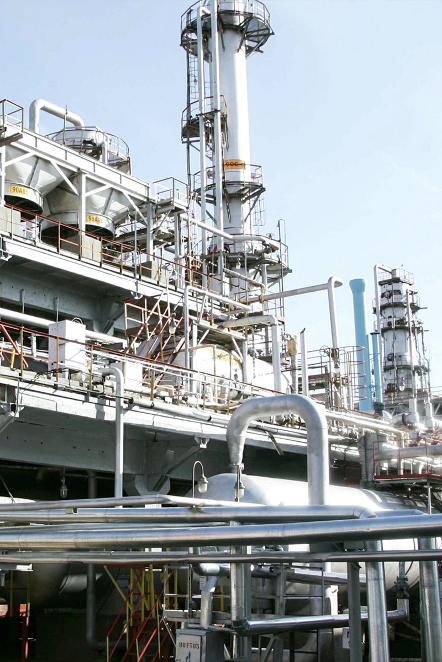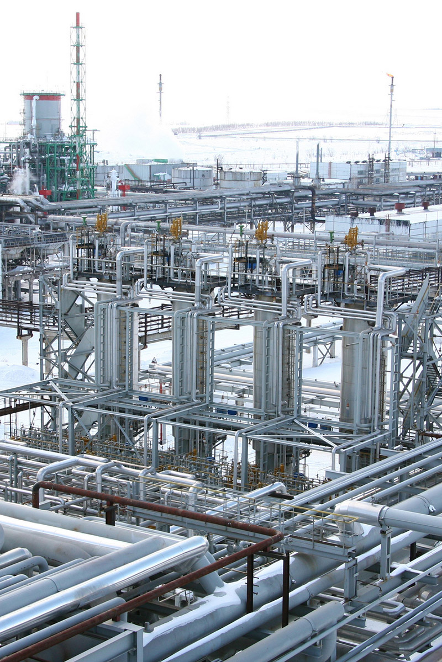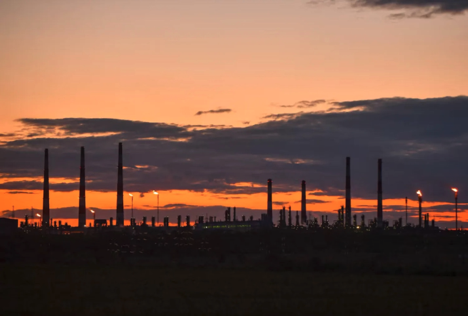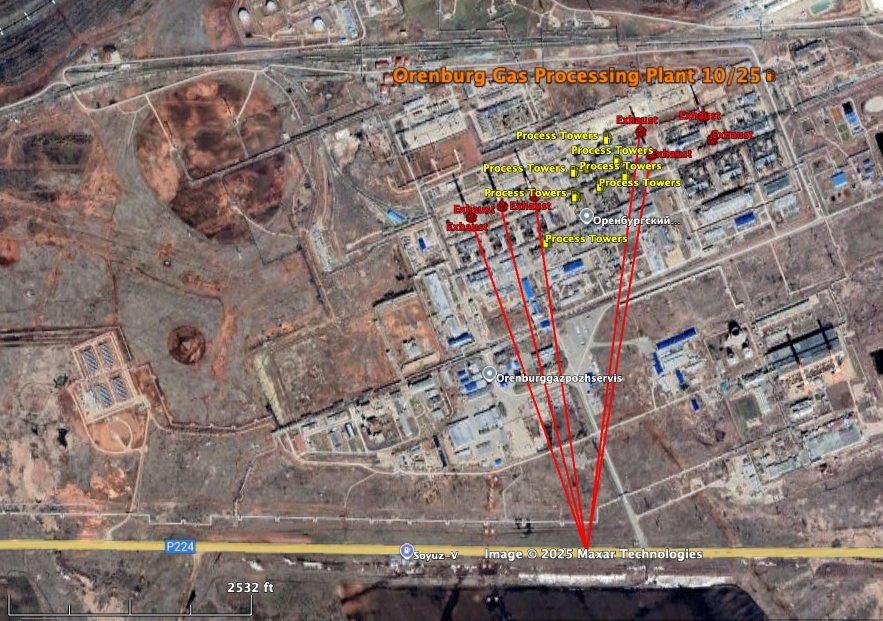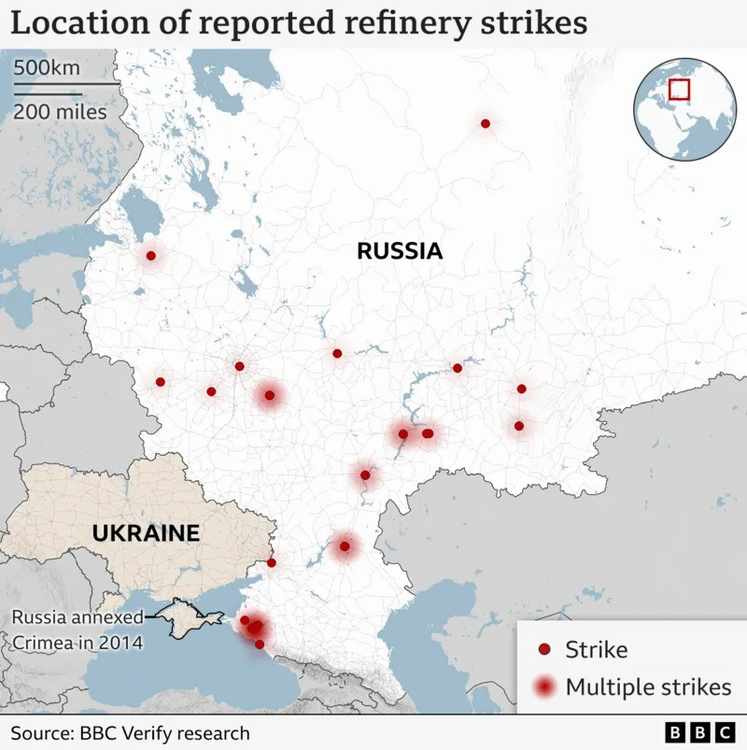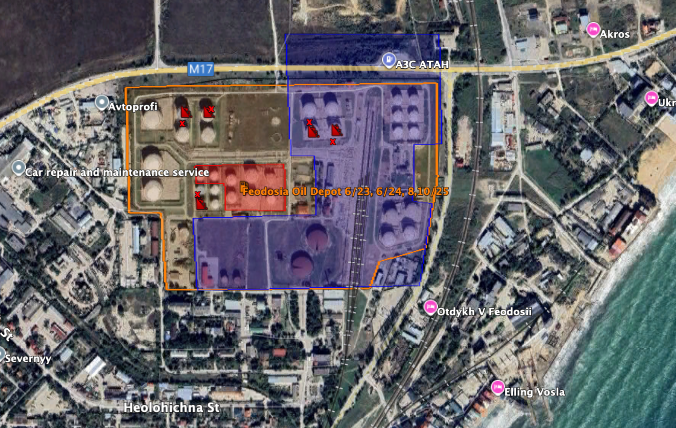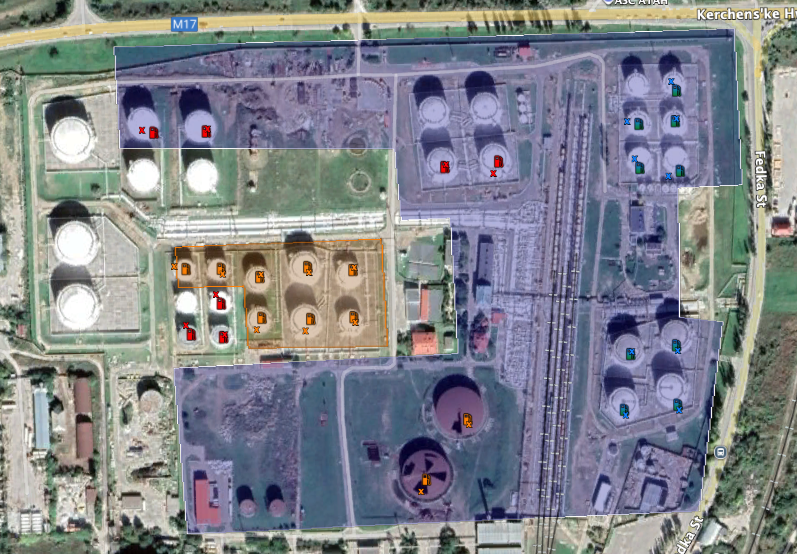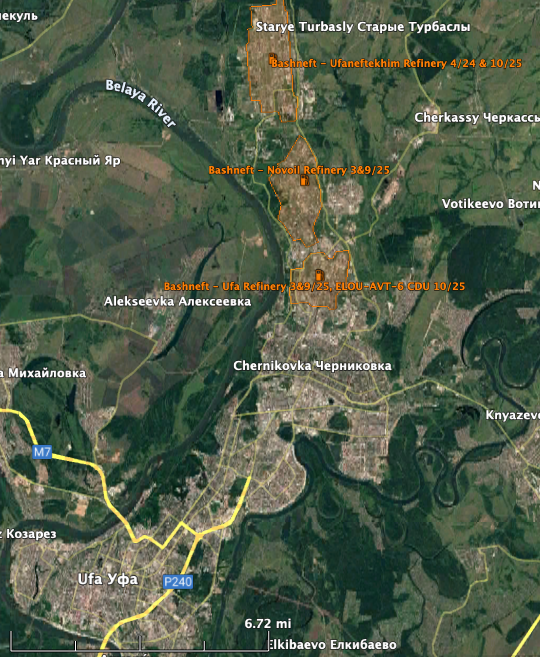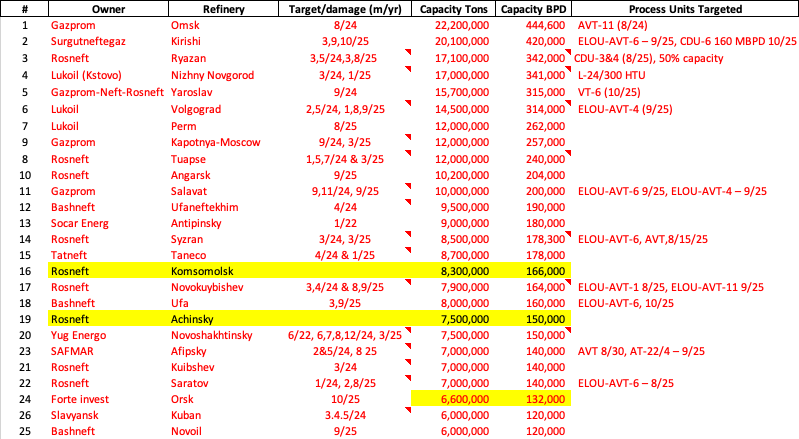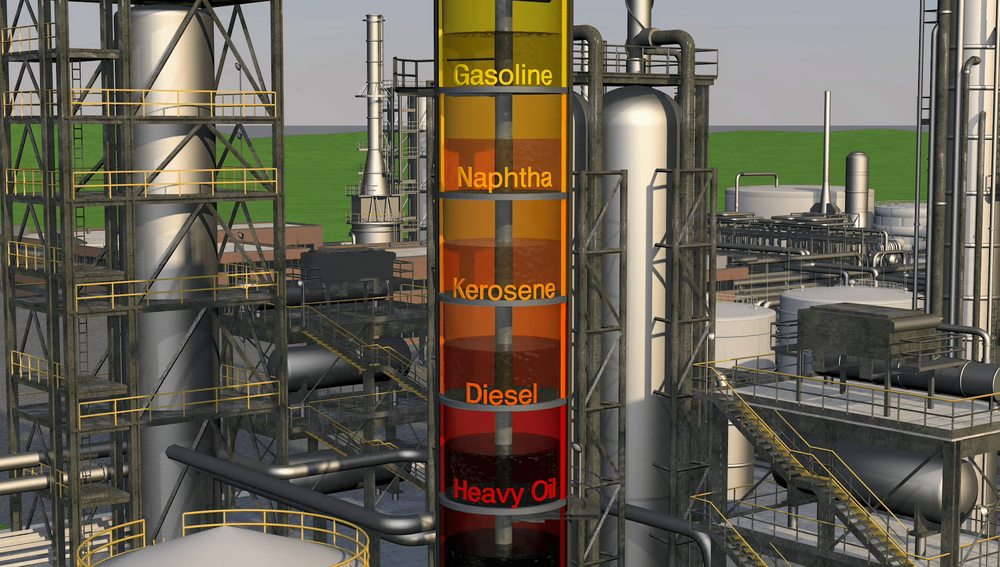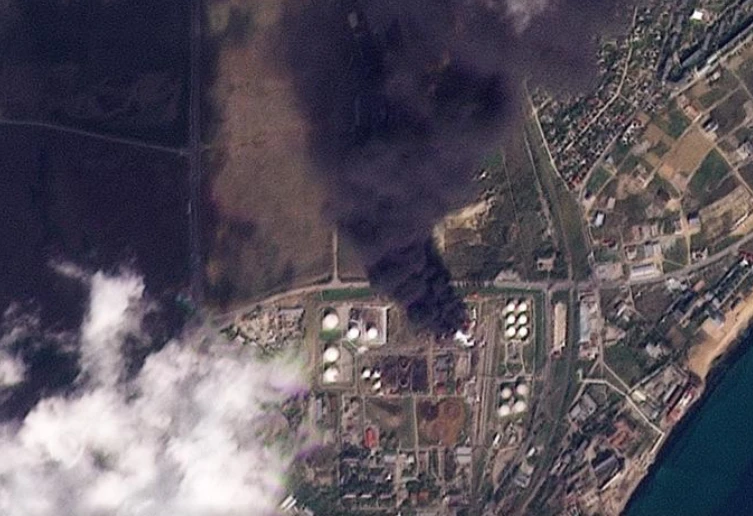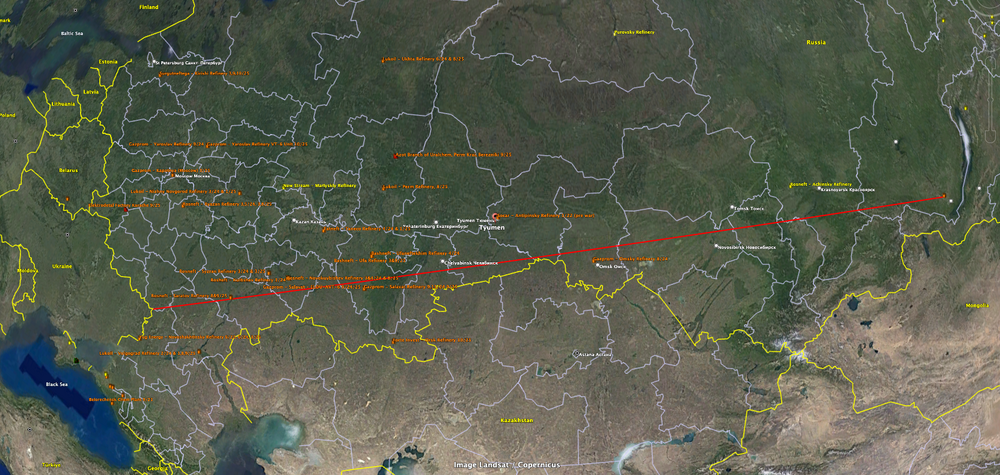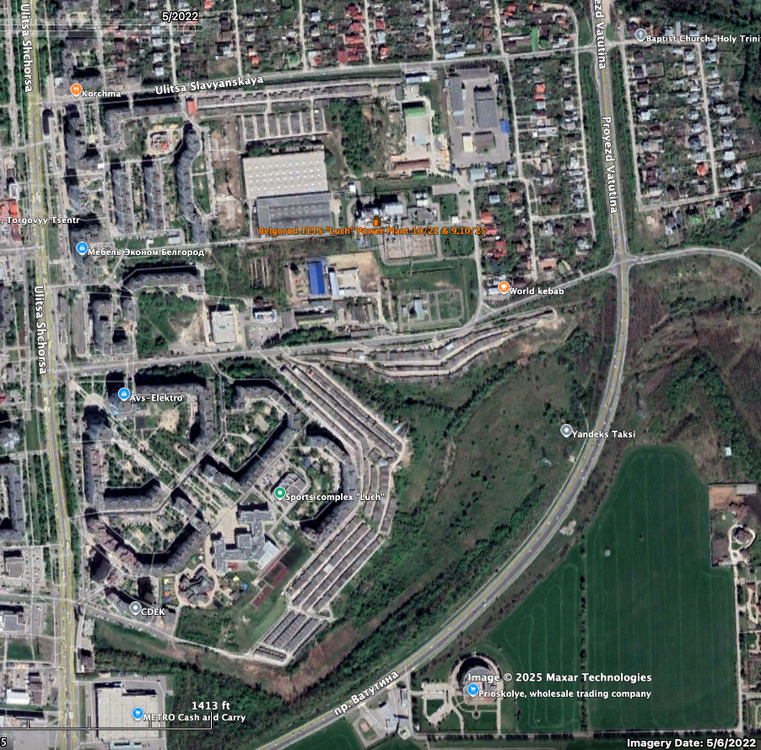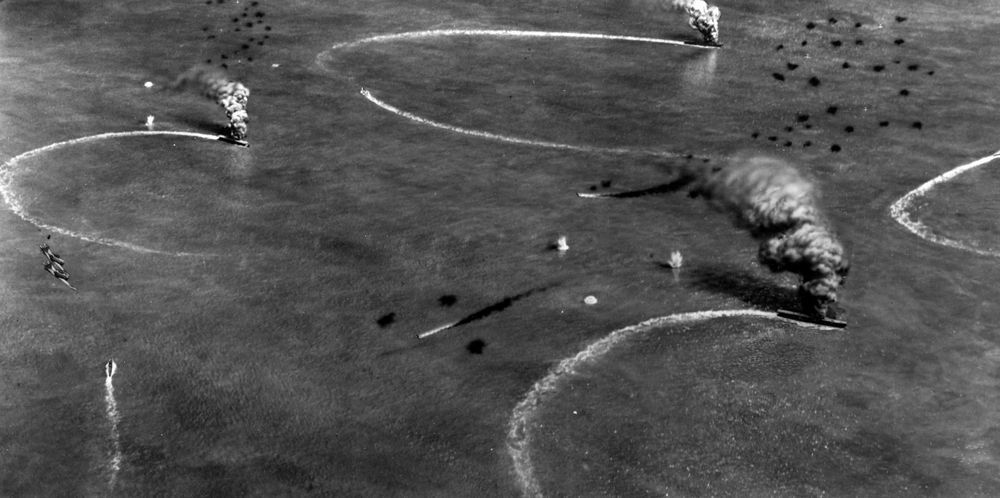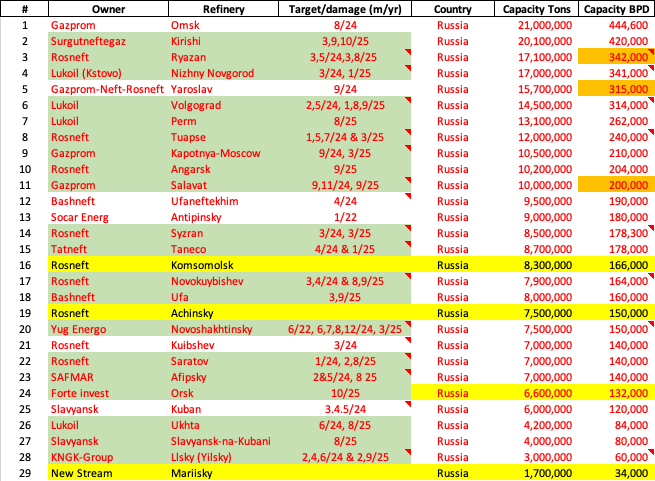Football ...
Basketball ...
Baseball ...
Other Sports ...
Futbol ...
🤫995🤫 ...
Gambling ...
Movies & TV ...
Music ...
Hobbies ...
Lulz ...
Food & Travel
...
Daily Texan ...
Business & Markets ...
Cloak Room ...
Help ...
For Sale ...
Board Discussion ...
Advertise...
Tailgate Donations
-
Posts
1221 -
Joined
-
Last visited
Content Type
Profiles
Forums
Store
Downloads
Recruiting - 2020
2019-2020 Football Season
Football
Entertainment
Sports
News and Business
Cloak Room
Transfer Portal
Recruiting
Events
Everything posted by PTINS
-
And I thought hot-wiring something was so 80's. It looks like they are either routine repairs or just fixing some minor collateral damage. There are no scorch marks, and the piping doesn't look like a bowl of black spaghetti. I'd like to see some photo's and video's of the aftermath of the explosions in the attack videos.
-
Absolutely. Chase Daniels has a lot of reasons to dislike Texas. His Top 10 Missouri team (2008?) got smoked when Texas jumped out to a 35-0 2nd qtr lead. But, he's an NFL QB who knows his craft, and the differences between the college game and the NFL, and the skills and performances that translates between them. He did a great job of showing the pre-snap alignment and disguised coverages, the WR routes, the options that would, and were, either covered or open, and Arch's reading them one by one, going through his progressions, until he found the open receiver. Or the opposite, recognizing he would have a one on one pre snap and just waiting to make the throw. You can't see some of that from watching TV. Chase was pretty emphatic on a few of them, going through the progressions, and making the throws; "... this is why he will be the #1 draft choice..." Arch recognized the blitz early, anticipated the gaps in coverage, and got the ball out quick, which made the OL look a lot better. He had a bunch of NFL throws Saturday. The way he led Wingo like he did, the defender following him across the field had no chance to get there to make a tackle. If Wingo breaks stride, or jumps, or reaches back, it is just a routine behind the line pass, + or - 2-3 yards. (Chase was very complimentary of Weisner's pass blocking.) Reading 4 pages of this thread is agonizing. How the fuck did you get into Texas? Oh, you were concussed after you graduated? Ooops! "... he missed some throws ..." Really? So did Mahomes, and Dak, and Josh Allen. Everybody misses wide open throws. Ironically, I came here way back when, (pre Shaggy?) to read and chat about Texas football. I avoid this thread most of the time because of the unrealistic expectations that some of you place on a bunch of kids. Arch's advisors wanted him to have 20+ pre-NFL starts for a reason. Like it or not, that comes with some growing pains. Some of the YouTube videos do a great job of analyzing everything that happens before Arch throws the ball, the poor (terrible) play calling, the ole' blocks, the poor route running, the things that make the QB look bad. Maybe a few of you should broaden your horizons, and consider some opinions other than your own, before you make some of your comments.
- 9748 replies
-
- 11
-

-

-
I have very little specific knowledge of some of my posts, but I can drive Google Earth & search pretty good. I am able to match up information from the posts here and related rabbit holes and provide what you read here. If one had Process Flow Diagrams and Plot Plans of facilities, it would be very easy to dial in GPS coordinates, and hit the critical pieces of equipment. Some of the videos of the hits on Refinery Towers tells me the camera guys knew exactly when and where to start the video. Nobody takes a video of a refinery for shits and giggles, unless they have a reason to do it. You all know better than I, but I think a lot of the USSR technology came from Ukraine. The Antonov 225 (Mira) and her two MIG escorts that came to Oklahoma City in '90-91, that Russia destroyed the first week of the war, were painted in Ukraine colors. Somebody went through the basements and archives and mined the data Ukraine needed to improve their targeting of strategic facilities. I could go back to my posts from the past 3 years (I am not doing it) and get a general idea when Ukraine got better at hitting targets. It is a combination of two different things, better targeting information and better weapons systems. This is the third time in 2 months Ukraine has hit the Sterlitamak Industrial complex; The Power Plant, the Avangard Chemical Plant in October and the Sterlitamak Petrochemical Plant this week. It could be 3 different companies are all the same, but they are all next to each other, with a combined footprint of 4-5 Sq miles. Sterlitamak Petrochemical Plant General Information Manufacturer of petrochemicals products based in Bashkortostan, Russia. The company manufactures styrene-butadiene rubbers, aviation and sports gasoline, multi-product low-tonnage chemicals, high-octane fuel additives and other petrochemical products, thereby helping companies in the production of phenolic antioxidants, used for the production of synthetic rubbers, plastics, fibers, lubricating and transformer oils, as well as for the feed, food and cosmetics industries. They make a lot of weapons related products. If they make the rubber products, given the size of the complex, that probably also make tires. The recent video was shot from the lower LH corner of my screenshot, with the orange rectangle deemed to be the probable location of the explosion and fire, The red polygon in the NE corner is an ''ammunition storage" area, which could be either ammunition, or propelants, or rocket fuels, etc. That is also within the scope of the video, and they do make nice fireballs. From earlier in the war,
-
Transformers are to Electrical Substations as Process Towers are to Refineries. Substations transform between Lower Voltage (Power Generation) up to High Voltage (transmission lines) and back down to Lower Voltage (distribution systems). The resistance across the transformers generate a lot of heat that must be dissipated, so they have large oil filled radiators and fans to help cool down the equipment. They are designed "fit for purpose" pieces of equipment and are not really interchangeable, and they are not likely to have spares sitting around. Other than arcing power lines, the transformers are about the only thing that burns in a substation. And like process towers, the heat signature of a transformer can be seen from space. 4 of the 5 stations are between Luhansk and the active contact line between Russia & Ukraine forces. Ukraine is unplugging the Russian power grid as they are counter-attacking Russian forces. I think it's going to be dark over there for a bit, and the Russian communications will be more challenging than they already were. (I have not updated my contact lines in quite a while and that info is dated.)
-
Now this is some quality reporting. A Lat/Long of the fire and a Google Earth photo. "It’s just a mathematical truth. We caused much greater damage to the Russian Federation through direct action than any economic levers of influence that had been introduced on them until now," he added. It looks like the netting stopped the drones, so Ukraine blew up the pipelines the old fashioned way. HUR said the strike targeted the Koltsevoy (Ring) pipeline, a 400-kilometer-long fuel artery used to supply Russia’s armed forces with gasoline, diesel, and jet fuel from refineries in Ryazan, Nizhny Novgorod, and Moscow. I'm betting the future holds some long range missile strikes hitting the storage facilities were the refinery pipelines cross the Moscow Ring pipelines. I'll try to find these when I get a chance. The toe bones are connected the the ankle bone, and the ankle bone is connected to the leg bone..., etc. "The green oil tanker in the photo is approximately 820 feet (250 meters) long and 145 feet (44 meters) wide is typically classified as an Aframax vessel. An Aframax tanker typically carries around 750,000 barrels of oil. The range is generally between 500,000 to 800,000 barrels, depending on the specific design and type of oil (crude vs. refined product). Operational Use: Aframax tankers are popular because their size allows them to access most ports globally, including those without very large crude oil terminals. They are commonly used for short- to medium-haul crude oil transportation in regions such as the Black Sea, the North Sea, the Caribbean, and the Mediterranean." The info provided puts the crosshairs on the pipeline manifold serving the berth furthest into the sea, away from the storage facilities. I think that means there a massive piece of steel and iron laying at the bottom of the Black Sea where the green tanker used to be. Equally important, the pipeline manifold itself is probably destroyed to the point that the isolation valves are inoperable at best, and destroyed at worst, meaning that oil flow cannot be stopped at the green berth at the end of the pipelines. The only means of stopping flow at the green tanker means the pipelines need to be shut off further upstream. A similar pipeline manifold exists at the loading berth with the red tanker, with the laterals and manifold 'teeing" off the mainlines. In this case, isolating the mainlines because of the fire at the green berth means the valves are closed further upstream of the red berth also, making that berth inoperable. A wider view shows that the Taupse terminal has 4 loading berths, each with a similar pipeline/manifold design as the green and red berths. The "Taupse Loading Manifold" shown is the first point at which the fire at the green berth can be isolated to stop the flow of oil to the fire. To isolate the fire at the green berth, the entire loading terminal is isolated. It appears that for the foreseeable future, crude and products exports from Taupse are not happening. Please note the Tuapse Refinery proximate to the export terminal, Russia's 8th largest with a capacity of 240,000 BPD. Tuapse was probably only exporting limited refined products, but that does not appear to be an option for a while. Tuapse and the entire coast is somewhat isolated by the mountainous terrain along the coast, and the rail line serving that area is a twisty, turning line ~ 50 miles long before you get to flatter terrain. Damaging the export facilities won't shut down the refinery, but the logistics of moving all the refined products out by rail just became more complicated.
-
You are correct, Sir, Russia is simply writing the checks, and international E&C Companies are doing the heavy lifting. Russia watched the LNG Boom 15-20 years ago from the cheap seats, and decided to get in on the action. The decision they made to monetize their World Class gas reserves and build export infrastructure was among the best decisions Russia ever made. Invading Ukraine was by far the worst. Though the US and Russia have somewhat comparable gas production, the last 3 years of mousing around on Google Earth has given me a different perspective. I am familiar with most producing basins in the lower 48, and Russia's reserves are on another level. The US production is technology driven; 10,000 ft horizontal laterals on wells, coupled with using 5-10 million gallons of fluids to fracture the formation, and "Drill, baby Drill." If you stop drilling, the gas production falls like a rock. Layer in the weather vane political climate in the US, and you end up with a tremendous resource and technological marvel hampered by the idiocy of the US, including the voters, and the officials they elect, and the mental midgets they appoint. The gas fields in Siberia, and everywhere else in Russia, look nothing like the US in terms of the number of wells. It seems like it is more like the Middle East ~ 100 years ago, drill a well and stand back and watch the money flow. The notion that Russia has their shit together the way Chevron developed their Permian assets is so funny to even think about it. Oil has always been a waterborne export fuel, because the supply-demand fundamentals in the Middle East were basically a 90-10 split. Produce it, put in on a boat, take it, and sell it somewhere. Targeting the Russian refineries is taking care of that. Gas is not that way. You only produce it if you have a place to move it, store it, or sell it. There are just a few major gas pipelines between the large gas producing countries and their neighbors. The Middle East had very little demand until 20-30 years ago. The US is mostly self contained, with Canada and Mexico. The USSR, and their satellites, was also basically self contained. Following the breakup of the USSR, Russia decided to join the real world and monetized their gas reserves, selling to Western Europe, China, and building LNG Plants and Terminals in the Arctic, in western Russia and in the Pacific. LNG required countries on both sides of the water to spend significant capital to deliver and receive gas. This was a big win-win for all involved. SE Asia has an insatiable demand for energy, and they also have world class engineering and construction capabilities. This is a very exclusive marketplace between countries, their nationalized energy companies, their engineering and construction companies, and the big utilities that consume the gas and produce electricity. Russia always had the gas, they said come and get it, and they did. I don't see much replacement until the fighting stops. A normal refinery turnaround might have a 1,000+ temporary workers for a few months, mostly skilled laborers. And nobody is firing missiles at them. I don't think Russia had many of those guys, before they invaded Ukraine. I'm not sure where Russia would get the 80,000 BPD refinery towers they need. My 1st guess would be South Korea, and that ain't happening. It seems the phrase "LNG" never made it into the 19 or 20 tranches of sanctions that have been placed on Russia. For good reason. 100,000,000 bbl per day of oil is produced and sold, to make ~ 100,000,000 bbl per day of refined products, a large portion of which is seasonal demand. Once refined, it is a fungible product, that loses its identity. LNG is complicated, for many reasons. LNG is imported by energy starved NATIONS with limited domestic production, most of which is used for power generation, and heat. Those nations include China, Japan, and South Korea, (most of SE Asia) and the "private" companies in each country, are the buyers of the LNG, the builders of the LNG facilities, and in a lot of cases, the interest owners in the LNG Plants. In no particular order, they want a return on their investment, and they want lights, electricity, and heat. But they want all of it. Targeting an LNG tanker and it's cargo, or any large Gas or LNG facility, could be deemed to be an "attack" on China, or Japan, or anybody else similarly situated. China, in some way, shape or form, probably put up most of the investment in the $50+ Billion Power of Siberia 1 gas project. On paper, maybe it looks the same as the Nordstream Pipelines. But the Nordtream pipelines could be repaired in a few months, quickly, and cheap (So Russia did do it, huh?). Replacing a $10 Billion asset, would take $10+ Billion, and 5-10 years, and the replacement energy would cost ~ 50% premium. As Jack Ryan was told, "You're talking about several billion dollars of state property; they're going to want it back." Ukraine appears to have created well defined corridors through Russia, send in a bunch of drones and missiles, and blow the fuck out of everything they come across, refineries, chemical plants, industrial plants, fuel depots, power plants, electrical substations, etc. My map of some of the Russian infrastructure Ukraine has damaged or destroyed, ... just in the past 3 months. Texas is about 10% larger than Ukraine. It's not hard to believe that the local towns and regions in Russia are circling the economic wagons. No place to go work, no money, no food, no support. When the main employers and revenue generators are no mas, and the state that provided everything stops being the state, what options are left? Russia is fucked, no matter what they do, and no matter when they do it. Fuck Around and Find Out. Bitch!
-
Relax, guys, I already took care of it for you. The reality is, how many significant oil pipelines exist between Russia and China? "Doughnut, babe. Nothing. Zip. Zilch." - Hunt Stevenson (Michael Keaton) in Gung Ho The waterborne crude oil exports from Russia to China is all there is. TLDR However, there is one major gas pipeline between the Bear and the Dragon, the Power of Siberia 1 Pipeline. This $55 Billion project, commissioned in 2021, included the 56" diameter, 1,860 mile pipeline from Kovykta Gas field in the Irkutsk Oblast (aren't you glad you played Risk?) to the China Border. I did check; there is a 9,500 ft mountain range they went around. The Kovykta Gas Field is over 1,200 miles southeast of the Urengoy Gas Field in Siberia that supplies used to supply Eastern Europe, via a 2,800 mile pipeline. The good news is the natural gas produced here is the really good stuff, that contains helium and is rich in Natural Gas Liquids. A Gas Processing Plant requires a cryogenic plant operating at ~ -170 °F to separate the NGLs.. Helium processing is way out of my comfort zone... "Helium extraction plant uses cryogenic distillation to reach temperatures as low as -269°C (-452°F), just a few degrees above absolute zero. These extreme temperatures are necessary to separate helium from the other gases found in natural gas because helium has the lowest boiling point of any element. " The really bad news is the economies of scale you need to monetize the resource is mind boggling, and it is conveniently located literally in the middle of fucking nowhere, in an area with design conditions of -60 ℉, and a freeze depth of 13 ft. The Total "Power of Siberia Costs" included: Gas Production Facilities $ 6.16 Billion Gas Pipeline $15.07 Billion Power Plant (160 MW) $ 8.47? Billion Gas Plant $13.70 Billion Chemical Plant $11.60 Billion $55.00 Billion The overall projecticludes the entire vertical integration of natural gas processing; Natural gas Production to Pipelineto Gas Processing Plant to NGL fractionation Plant to Ethylene Plant (cracking ethane to make ethylene and cracking propane to make propylene) to Polyethylene/polyPropylene Plant (plastic pellets). Everything you need to get from raw natural gas to plastic pellets that become everything plastic that is "Made in China." For a processing guy, it doesn't get any better than this. It is truly amazing that Russian can build something like this, yet they invade Ukraine so they can take the toilets. Some Russian Gas Processing Porn; The first column of NGL/NRU unit Natural Gas Liquid/Nitrogen Rejection Unit) in the P1 section of Amur Gas Processing Plant was officially put into operation on May 1st, 2021. By far, the largest process vessel I have ever seen.
-
The Ryazan Oil Refinery (RNPK, part of Rosneft) was attacked last night. This is was the #3/4 largest refinery in Russia, with a stated capacity of ~340,000 BPD, and had been operating at ~250,000 the past year. The fire broke out near the catalytic cracking or hydrotreating unit... Actual processing in recent years has been around 12-13 million tons per year. In August, following drone strikes, the plant temporarily reduced production capacity (temporarily operating with one large unit—approximately half its capacity). Today, it may have been finished off! This marks at least the third Ukrainian strike on the Ryazan refinery since August. On Aug. 2, the plant reportedly shut down two of its three primary refining units after an attack, and on Sept. 5, one more unit was taken offline, according to Reuters sources.
-
The Makhachkala Refinery is located on the Caspian Sea, which is landlocked, and looks to be primarily for making fuel and loading the Caspian waterborne traffic, like a big gas station. The capacity is ~ 20,000 BPD, well below the top 25 refineries over 100,000 BPD, averaging ~ 220,000 BPD. (I didn't know it even existed.) However, it is unique in being situated on the Caspian; there does not appear to be any similar facility on the Caspian anywhere else, including Russia and Iran. If Makhachkata is offline, the gas station is closed, and you'll have to find your products elsewhere. Iran was probably getting refined oil products from Russia, but those may have been been curtailed in recent months. Not sure what else Russia can give to Iran that has any value (food?), or that Russia doesn't need (weapons). They damn sure don't need crude oil. It is noteworthy that Ukraine is getting towards the bottom of the list for refinery targets. It has to be comforting to shoot at targets with a heat signature that can be seen from space. Most of the refineries and almost all of the gas plants I've been to were in remote locations, as stand alone facilities. Most US gas processing plants migrated to purchase power to facilitate environmental permitting and compliance with regulations, and limiting their emissions as much as practical. If you don't mind, where is your facility? No company name, please.
-
Fred had me when he talked about playing OU; "They better have their head gear strapped on tight!'" I think this needs to be the staple of the offense, to get Arch in motion, by design, and away from a "pocket" that looks more like a jail break. I would think in HS he threw on the run a lot and is more comfortable when he's moving, by choice.
-
The Smolensk Nuclear Power Plant is the biggest power generating station in the north-western region of the united energy system of Russia. Smolensk NPP has an outer appearance similar to that of Chernobyl NPP units 3-4, as both are later generation RBMKs. (Hint: Smolensk does not have a Sarcophagus over one of the reactors.) The three RBMK-1000 reactors of Smolensk NPP were commissioned in 1982-1990 (First Criticality for each unit Unit 1: September 10, 1982; Unit 2: April 9, 1985; Unit 3: December 29, 1989, with grid connection shortly thereafter).[4] The reactors of Smolensk NPP are the improved versions of RBMK with a number of innovative safety systems As you would expect, there is a very large substation near the plant, less than 1/2 mile from the reactor buildings, separated by a water canal. Ukraine looks like they are dialed in to the point they can hit specific towers. But Ukraine needs to stay the fuck away from the nukes!!! I know I joked about "Aim small. miss small" and "This man can hit us any time he wants", but damn. Zelensky showing off his big brass balls to "the Donald." Hmmm? Is that why Trump doesn't like Zelensky? Trump can't take Zelensky balls deep like he can Putin. FYI, most refineries generate their own power for a couple of reasons; they need the low pressure steam and waste heat in the process areas to heat the bottom of the towers, and more important, generated power is more reliable than purchased power.
-
New favorite video: (notice how high the flames get before there is any sign of black smoke (incomplete combustion)) Rosneft Novokuybishev Refinery "Circular error probability zero. Impact with high-order detonation. Have a nice day." Very Good article, worth the time: Inside Ukraine's drone campaign to blitz Russia’s energy industry "You don’t have the cards,” Donald Trump famously told Volodymyr Zelenskiy during their Oval Office showdown in February as he dismissed Ukraine’s capabilities in the war against Russia. As the two leaders prepare to meet in the White House again, Ukraine’s military remains on the back foot — but it has shown it has at least one potent play to hit the enemy where it hurts: long-range drone strikes on Russia’s crucial energy industry. Last month, Zelenskiy described the attacks on the oil sector, which funds and fuels Moscow’s war effort, as “the sanctions that work the fastest”. Ukraine has launched at least 58 attacks on key Russian energy sites since the start of August, sending drones as far as about 2,000 km (1,200 miles) into Russian territory to bomb refineries, pumping stations, storage depots and export terminals, according to data compiled by UK-based non-profit group Open Source Centre (OSC). Drone strikes at various refineries knocked out around 17% of Russia’s refining capacity in mid-August, or 1.2 million barrels per day, which rose to 21%, or 1.4 million barrels per day, by the end of that month, according to Reuters calculations." Reuter's is saying 1.4 million BPD by the end of August. I would think it is ~ 30% by now, ~ 2 MM BPD.
-
That's a good question, for which I don't really have an answer. After thinking and writing what is below, I think the electricity is the answer. That seems like the one thing that affects both the war effort and the social elites. China, North Korea and Iran aren't sending any extra electric power to Russia. The main value of Russian Oil & Gas is export value, the cash and currency that drives their economy. Yes, they need the refineries and finished products, but having money always works, especially when you don't make and sell anything else. They can always buy gasoline and diesel if they have money. Queue Willie, "Turn out the lights The party's over They say that all Good things must end..." My reasoning for the above. Does Russia lose the war because of socialites in Moscow and St. Petersburg are upset, or because the conscripts & criminals on the front limes don't have food, fuel or ammunition? Common sense would say the war effort, but I don't think that is right. Russia has ~ 25 refineries over a 100,000 bbl/day capacity, all of which have been hit repeatedly, other than the 3 located in far eastern Russia. Extrapolating Ukraine's success the past 2-3 months for another 3-6 months would seem to be enough to deprive Russia of transportation fuel in a meaningful way, which means some things quit moving. Taking what I know of the US, and applying it to Russia is folly. The US is all about supply & logistics, and that isn't Russia. The US energy infrastructure is much different than Russia. Our nationwide distribution system is much more pipeline oriented and very little rail. Capitalism, and a free market system with profit opportunity drives a lot of private investment, which means infrastructure anywhere and everywhere. Soviet Russia seemed to be a giant support system for Moscow, with everybody else getting the bare minimum of support and infrastructure. One thing I've notice is most of the energy infrastructure buildings have blue roofs. I assume everything that is blue that isnt energy related is from the graft and corruption in Russia. Google tells me Russian rail is dependent primarily on electricity. Electrified rail moves the food and the oil products. Ukraine has increased strikes on electrical substations, and to a lesser degree power generation plants. It seems the targeting those type facilities has been more discreet and not the wholesale destruction of the power grid, for many reasons. Fuck 'em!!! Deprive the Russian urbanites of electricity, warm food and light, and bring the effects of war to their day to day lives.
-
I believe that Trump has crossed into the zone formerly occupied by Biden in the last few months of his presidency. Ukraine needs to keep doing what they have done the past few months. No, I do not.
-
Full disclosure, I love seeing Russian shit go boom in the night. But, having spent my professional career working in and around gas processing plants, where the marvels of technology showcase the simplicity of Newtonian physics, where everything around you is a hazard and safety is preached every day, all day, until it becomes your way of life, it is with mixed emotions that I share my thoughts here. The people that work here don't carry guns, they carry pictures of their kids. "Russia says overnight Ukrainian drone attack targets gas facility in Orenburg region Governor says fire broke out at a workshop of partially damaged facility, adds no casualties reported" - Burc Eruygur 19.10.2025 Nor was it a just a "workshop fire." I can't even write that without laughing out loud!!! You all have been very patient with me as I drone on (you like that ?) about hitting specific targets rather than simply lobbing grenades over the fence. A gas plant has nothing but large pressure vessels full of high pressure natural gas and Natural Gas Liquids. And massive gas plants with a series of "trains" of multiple process vessels, heat exchangers, pumps and compressors, and separators and condensers, ... My screenshot of the Orenberg Gas Plant. I have highlighted in red the tall Red & White striped smokestacks you see in the photos and the video in the OP. The video is shot from the road to the south, ~ 3/4 mile from where the actual fire is. I have highlighted what I call "Process Towers" in yellow, which is where most of the intense fire is, between the smokestacks. It would appear that massive fireball envelopes most of the process towers. The roar of the fire in the video is the expansion of high pressure gas at sonic velocity, depressuring rapidly from 1,000 PSI to atmospheric pressure, and to make it really exciting, igniting and burning. The heat from a truck fire will melt everything but the wheels and the drive shaft. This fire, with a constant fuel source, won't leave much of anything. Just for fun, crank the sound on the video of the fire up to 10, 11 if you have it. This is from a cell phone 3/4's of a mile from the fire. The Orenburg Gas Plant is one of the largest in the world, 2nd to the massive Empress Plant in Alberta, CA, (maybe something in Qatar?). This plant is 4 times larger than anything in the Lower 48 of the US, processing gas from the Orenburg region of Russia, as well as gas produced from the Karachaganak oil and gas fields in neighboring Kazakhstan. The gas processed at the plant is the two extremes of natural gas; (i) Gas with any helium content is very valuable (used to be ~100x the price of natural gas) and usually becomes government property and has a processing plant built just to extract the helium, and (ii) the other side of the equation, gas with extremely high concentrations of hydrogen sulfide (H2S), mercaptan sulfur and carbon dioxide (CO2), "acid gases", which are lethal after 1 breath at these levels. The commercial spec on natural gas pipelines is 4 parts per million (ppm); some of this gas has 6.8 % H2S, 68,000 ppm. This is a case where you isolate the fuel source, and let the fire burn itself out. Even then, the products of combustion include sulfuric acid and carbon acid, among other things. You always want to be upwind of these plants. 2 good links below: Ukrainian drones ignite one of Russia’s largest gas plants 1,200+ km from front lines ORENBURG GAS CHEMICAL COMPLEX Some Gas Plant porn: The 7 "smokestacks" are easily identifiable, and the multiple flares can be seen, where the "off gases" are burned in a controlled manner. In the photo below, as you look at the smokestacks, the various process towers can be see in the foreground and to the right. Gas processing towers are not as big and tall as refinery towers, as more of them operate at higher pressures, up to 1,000 PSI, and some of them operate at temperatures as low as - 170 °F. The roadway in the OP video would be to the right in this picture, with most everything in front of the 4 smokestacks within the fireball. Nice shot of a mushroom cloud against the backdrop of a much larger fire, probably a smaller pressure vessel having a "BLEVE", a Boiling Liquid Expanding Vapor Explosion. It occurs when a container holding a pressurized liquid, like propane or other industrial gases, is heated to a point where the internal pressure becomes too great for the vessel to withstand (the boiling liquid vaporizes at a higher rate than the capacity of the relief valve). This causes the container to rupture, and the liquid flashes into a large vapor cloud, resulting in a powerful explosion and, if the contents are flammable, a massive fireball.
-
From Euromaidan Press - (me thinks Surly has a new subscriber) Analysis of two months of deep strikes explains what Ukraine really targets at Russian oil refineries Analysis of two months of deep strikes explains what Ukraine really targets at Russian oil refineries. The study reveals a deliberate focus on refinery processing units, whose loss cripples output far more than visible explosions do. by Yuri Zoria, 15/10/2025 - 7 minute read (not a 30 minute Youtube video, ha ha!!!) Ukraine’s two-month strike campaign against Russian oil infrastructure wasn’t random — it followed a deliberate pattern. In a detailed analysis for Mezha, Vadym Hlushko, founder of the OSINT group Cyberboroshno, reveals exactly what Ukrainian forces targeted inside Russia’s refineries — and why each strike mattered more than its explosion. Amid the ongoing Russo-Ukrainian war, Russia is concentrating its strategic bombing campaign on Ukraine’s energy infrastructure, seeking to deprive civilians of power and heating ahead of winter. At the same time, Ukraine is in the third month of renewed long-range drone strikes against Russia’s fuel processing and transportation systems — including refineries and pipelines — aiming to disrupt military fuel logistics and reduce export revenues sustaining Moscow’s war effort. Summer campaign marks sharp shift from earlier restraint From spring into early summer 2025, Ukrainian forces largely avoided striking Russia's energy sector. Between 20 March and 30 June, Cyberboroshno documented 19 confirmed hits on Russian defense plants and 5 on military sites, but none on energy targets. This restraint may have stemmed from diplomatic pressure or what was described as an “energy truce,” while the focus shifted to Russia's military-industrial facilities. The effect of those earlier strikes on defense factories was limited. Ukraine’s long-range weapons achieved some success, but without a large supply of heavy warheads, they could not inflict decisive damage on Russia’s military industry. That dynamic shifted when Russia renewed strikes on Ukraine’s energy grid this summer. In response, Ukrainian long-range drone units reactivated their own campaign against Russian energy infrastructure. President Volodymyr Zelenskyy stated at the time that Ukraine could now launch 100 to 150 drones into Russia daily. While that figure still trails Russia’s output, the effects are growing more visible. BBC verify counts 21 russian oil refineries hit since — already 48% more than all 2024 A record 14 refineries were hit in Russia in August and another 8 in September, sparking fuel shortages in many Russian regions. Map showing reported Ukrainian drone strikes on Russian oil refineries across the country, including multiple hits on major facilities. Data confirms growing strike rate and clear targeting logic Cyberboroshno analyzed only confirmed attacks — verified through satellite images or on-site videos — excluding unverified media reports. Between August and September 2025, 30 attacks on Russian energy infrastructure were confirmed. Of these, 23 were successful, 2 failed, and 5 had undetermined results. That translates into roughly three confirmed successful strikes per week. For comparison, from January to March 2025, there were 2.1 confirmed energy infrastructure hits weekly. Ukraine has not only maintained the strike pace but increased it compared to earlier phases. The increased tempo reflects a more concentrated strategy. Instead of hitting warehouses or logistics centers, Ukraine focused its strikes specifically on energy infrastructure. Ukrainian drones hit refinery heart: AVT units and pipeline chokepoints According to the analysis, most confirmed successful strikes — nine in total — targeted atmospheric vacuum distillation units (AVT). These are essential for primary crude oil processing. Damaging them can halt a refinery’s production entirely. Atmospheric-vacuum distillation units (ELOU-AVT series) are the most critical and most frequently targeted installations. They perform the initial distillation of crude oil, feeding the rest of the production chain. When one is disabled, the refinery’s main operation stops. ELOU-AVT-1 – Novokuybyshevsky refinery (1 August) ELOU-AVT-4 – Gazprom Neftekhim Salavat (18 September) ELOU-AVT-6 – Saratov refinery (10 August), Syzran refinery (15 August), Kirishi refinery (14 September), Gazprom Neftekhim Salavat (24 September) ELOU-AVT-11 – Novokuybyshevsky refinery (20 September) AVT (unspecified model) – Krasnodar refinery (30 August), Syzran refinery (15 August) primary oil refining unit AT-22/4 – Afipsky refinery (26 September) The second most frequent targets were technological overpasses — fuel pipeline systems inside the facilities. Five successful hits were recorded, four at refineries and one at a pumping station. These overpasses are critical for internal oil transport between installations. Even partial damage can disrupt entire production chains. Saratov refinery (10 August) Volgograd refinery (14 August, two overpasses) Syzran refinery (15 August) Bashneft-Novoil (13 September) NPS “Vtorovo” (7 September) Third came natural gas fractionation and gas-condensate processing units, with four confirmed hits, and an attack on the natural gas processing plant. These systems are vital for producing liquefied gas and petrochemical products — essential for domestic consumption and exports. Ilsky refinery – gas fractionation unit (7 September) Gazprom Ust-Luga Gas Condensate Complex – cryogenic gas fractionation unit (24 August) Afipsky refinery – joint gas and condensate processing unit (7 and 28 August) Astrakhan gas processing plant – production line (22 September) Ukrainian drones also hit five pumping and dispatcher stations of Russia's oil pipelines. These facilities are central to major pipeline systems. Damaging them can halt crude oil delivery over hundreds of kilometers, affecting both domestic logistics and exports. Unecha – pumping station and transfer zone (13 and 22 August) LPS “Nikolskoye” – substation (18 August) LPS “Naytovichi” – pumping station (29 August) LPS “Samara” – pumping and reservoir installation (20 September) NPS “Zenzavatka” – control station (24 September) NPS “Tingovatovo” – unspecified damage (27 September) Not all explosions signal success Not every attack yielded significant results, as confirmed in two prominent examples. One involved the Ukhta refinery. Media reported explosions, air raid sirens, and a damaged tank, but no fire or critical damage followed. The only confirmed impact was a punctured tank that did not ignite. In another case, video showed a blast near the Saratov refinery. Later, it turned out the drone had hit a nearby lake rather than the facility itself. These examples underscore the need for careful post-strike assessment. As the analysis points out, a dramatic video alone does not guarantee the enemy suffered meaningful losses. Supply disruptions ripple across Russian regions Even some successful strikes brought only short-term effects. Damage to infrastructure tied to the Druzhba pipeline, for example, interrupted Russian fuel supplies to Hungary for only a few days before Russia restored operations. However, many attacks did cause production and logistics disruptions. Russian open sources, reviewed by Cyberboroshno, reported fuel shortages in 33 out of 83 Russian federal subjects. These issues are now affecting consumers nationwide. The timing of Ukraine’s campaign may have amplified its effect. The strikes coincided with peak fuel demand, as farmers require significantly more diesel during the harvest season. However, analysts suggest the Russian military is unlikely to face shortages — the armed forces are likely prioritized, while civilian sectors and exporters absorb most of the impact. ft american intelligence helped ukraine attack over dozen key russian oil refineries since midsummer · post fire rises ilsky refinery following ukrainian drone strike 7 2025 telegram/supernova+ krasnodar krai news Nevertheless, the campaign puts economic pressure on Moscow. Oil and petroleum products reportedly make up roughly 30% of Russia’s budget revenues. Early numbers still misleading — true impact assessment will take time: the campaign continues into October Determining the exact percentage of destroyed oil processing capacity remains difficult. Early in 2024, some reports claimed Ukraine had knocked out 14% of Russian refining capacity. By year-end, Russia had recovered some plants and increased output at surviving facilities. The actual annual decline was just 3%. Now, during the current campaign, various sources report different and sometimes contradictory figures. The Russian outlet RBC claimed 38% of refinery capacity was offline, two-thirds due to Ukrainian strikes. Kommersant reported a 20% fuel shortage and a production drop of 1 million tons in September. Cyberbotoshno notes that Ukraine’s campaign continues and conclusions remain premature. In the first half of October, Ukraine has already hit more Russian fuel facilities. * Ukraine struck more Russian oil refineries, including the facilities in Yaroslavl Oblast more than 700 km from Ukraine, Leningrad Oblast, facilities in Bashkortostan and Orenbug Oblast both 1,400 km away, and other processing plants. * Several attacks targeted the Feodosiia maritime oil terminal in occupied Crimea, causing massive fires. * Another target was a natural gas processing plant in Volgograd Oblast. In its October assessment, the International Energy Agency says Ukrainian drone strikes have cut Russia’s refining output by 500,000 barrels per day and will keep processing rates low until at least mid‑2026 — a forecast that does not include the impact of future strikes from Ukraine’s ongoing deep-strike campaign. My comments: IMO, I think the overall impact on Russian refining capacity is more than the 500,000 BPD going around. Just some of the photos of the burning towers indicate that the main process units were damaged/destroyed. Some of those process towers had individual capacities of ~ 100,000 BPD. I just don't see that Russia has the skilled labor necessary to rebuild any of that any time soon. Anybody that wasn't working on a full time basis was probably conscripted and sent to Ukraine a long time ago. To rebuild refinery process units, there are probably 30-50 types of different craftsman required, each requiring unique skill sets that come from years of experience. "If you don't have the time to do it right the first time, when will you have the time to come and fix it?" I remember the days of 24-36 week delivery times on large equipment items (over a year on large gas turbines) that were critical path items on the project completion schedule, and the shenanigans of other companies trying to "buy" your stuff or jump ahead of what was already on the assembly line. (I myself did not participate in those shenanigans, I just used my insight and ingenuity to get what I was entitled to.) That was from normal supply and demand, not trying replace something intentionally damaged in a war zone.
-
Thanks for the post. We were both writing at the same time! I went back this morning and looked at the recent Ukraine targets. Refineries, pump stations and oil terminals, ammunition plants and storage depots, power plants and electrical substations, critical manufacturing plants (some single source) in the supply chain. The cumulative effect on the Russian supply chain, economy and the capacity to make war has to be staggering. Plotting these on a map, and it's like ... Tomahawks cruise missiles would be a nice add, but Ukraine is fucking dunking on Russia every time they get the ball. Part of me says keep it up and fucking kick their ass back to the 19th century. The sad reality is that Russia will attack schools, hospitals and apartment buildings until somebody makes them stop. When this ends, the free world will be standing in line to help rebuild Ukraine, with nobody willing to walk across the street to piss on a Russian fire. Maybe a massive shower of cruise missiles would do the trick.
-
Updated photo of Feodosia Terminal, Crimea Orange - Attacks prior to August 2025 Red - Attacks last week (early October) Blue - Attacks this week Satellite Photo I think Ukraine is dragging their 'nads showing their capabilities of the systematic destruction of Russian infrastructure. "Satellite images confirm 11 fuel tanks destroyed at Crimean oil terminal after Ukrainian strikes A key fuel supply hub for Russian forces in Crimea has lost 11 storage tanks to Ukrainian strikes this month, with several more tanks unlikely to be restored to operation. by Maria Tril, 18/10/2025 Radio Liberty's Russian service has released satellite imagery documenting extensive damage to the oil depot in Feodosia, occupied Crimea, following Ukrainian strikes on the facility. Ukraine's drone strikes focus on Russian military airbases, manufacturing facilities, oil refineries, and energy infrastructure. According to military analysts, these operations aim to disrupt Russia's fuel supplies and inflict economic pressure. Attacks on oil refineries have hit approximately 38-40% of Russia's refining capacity, damaging production of gasoline, diesel, and aviation fuel, which has led to shortages and price increases within Russia. The images show 11 fuel storage tanks completely destroyed as a result of Ukrainian attacks on the site, according to Radio Liberty. Several other damaged tanks are unlikely to be recoverable. Ukrainian forces struck the Marine Oil Terminal facilities in Feodosia on 6 October. The General Staff of the Armed Forces of Ukraine described it as "a multifunctional technological complex for transshipment of oil and petroleum products from railway tank cars to sea vessels and back, as well as to road transport, which is involved in supplying the occupying army of the Russian Federation." The massive fire that erupted following the Ukrainian strike could not be extinguished for more than two days, Radio Liberty reports. On 13 October, Ukrainian military forces struck the Feodosia oil depot again. The result of two Ukrainian strikes on 7 October and 13 – 11 completely destroyed fuel tanks, several damaged and unlikely to be recoverable, according to the reports. The first Ukrainian strike on the oil terminal in October 2024 destroyed or fatally damaged 14 tanks at the hub that supplied fuel and lubricants to the Russian army in occupied Crimea. A Pantsir air defense system installed at the refinery in 2022 failed to prevent any of the three Ukrainian attacks."
-
There are 3 Bashnet Refineries in the Ufa area, Ufa (160,000 BPD), Ufaneftekhim (190,000 BPD, and Novoil (120,000 BPD), with the 3 totaling 470,000 BPD of capacity, and covering over 4,600 acres, or ~ 7 square miles. In Austin, TX, the area between Mopac and I-35, and 38th Street to Town Lake is ~ 3,700 acres. The total refining capacity here is comparable to Highway 225 in Deer Park, or along I-10 in Lake Charles. In the screenshot photo in the OP, you can see a lot of green open space within the refineries. That is not common to the few US Refineries I have been to. With so many different pieces of equipment in the refinery, and as spread out as they are, it is very difficult to tell what exactly was hit, but one thing they all have in common is everything makes big fireballs with thick black smoke. .and I updated my listing of the Russia Refineries over 100,000 BPD, showing the individual process units that have been targeted and/or damaged. In most cases, i think if the large pressure vessel itself was damaged, it is basically a total loss, which would probably take a year to replace, and require a labor force of 500-1,000+ people. Some of these individual towers are 10+ feet in diameter, 100+ feel tall, and refine 100,000+ BPD, or a tank truck full of gasoline every 2-3 minutes. Just to replace the vessel may take 6 months, with another 6-12 months to replace all the other related equipment. As so many of there are linear processes, and interruption in the chain is important, but not necessarily critical. DIesel is a relatively dirty fuel compared to Jet fuel or gasoline, but at the end of the day any "off-spec" fuel would probably work okay with a smallish degradation in performance. I'm betting the Russia and US refining standards would never be confused with each other. I think early in the campaign, Ukraine was content with the equivalent of lobbing grenades over the fence and hoping something blew up. In the past 6 months, they started identifying by name and number the process units they targeted and/or hit, which is indicative of better targeting intelligence, and better weapons and technology. One can infer from the vessel numbers that their multiple units that have similar functions, with the newer versions being bigger and better versions of the older ones. The concept of a "refinery capacity" is kind of a nebulous term, as it is probably the capacity of everything there, when there is a low probability that it all operates at the same time. A lot of the equipment would be an either or operation, but not both. That makes determining the degree to which refining capacity has been reduced not much better than an educated guess. Most equipment operates better at higher rates. Most of the refining equipment are static process vessels with fluids moving in and between them the only "moving parts." The motors driving pumps and fans are relatively simple machines that are basically on or off, with not a lot of difference between operating at 50% load v. 90% load. The most critical thing is the predictive and preventative maintenance on the dynamic pieces. In a higher demand/price environment, the equipment usually operates near the capacity, and even the best companies are prone to delay scheduled maintenance until prices normalize. Sometimes it works, and sometimes it doesn't. The concept of "run to fail" usually works like it sounds. Please note that delaying maintenance is not the same as compromising safety. Though I don't think maintenance or safety are very important in Russian facilities these days, or if they ever were. Gas processing is similar to oil refining, but gas is much different than oil. One big pump can move a lot of oil. It takes a bunch of really big compressors to move a lot of gas, either large gas turbines with complex and expensive rotating assemblies, or reciprocating compressors that by their nature, are machines that require constant maintenance. Most companies have learned that regular maintenance means regular maintenance.
-
My screenshot; Red icons and the Red polygon in the middle are pre October strikes. The Red icons within the Blue polygon were the Oct 6 strikes. The Blue polygon is from the FIRMS shot in the quoted post. It appears they hit everything on the easy side of the terminal, including the rail loading/unloading facilities. I believe Ukraine has chosen not to target the 3 large tanks on the west side of the property, because they are large, and very close to civilian infrastructure adjacent to the terminal. Should have called me. I put out a diesel fire, at fire school, in a 6'x6' pan ~ 6 " deep, with a dry powder extinguisher. The protocol w/ oil & gas fires, cut off the fuel source, control the fire, and then assess. your options. Burning gas (vapor, natural gas, not gasoline) in a controlled environment is preferable to a large gas plume continuing to vent and grow, looking for an ignition source, that vaporizes everything within the plume. Most big gas fires, like the one next to Walmart in Pasadena, you isolate the fire and let it burn itself out. Most liquid fires, try to put out the fire, and clean up the mess. From the FIRMS data, it appears that most of the facility is burning, which probably includes the fire water system, is compromised and/or to hot to get access to. My first guess is that the terminal if fed by rail rather than pipelines. That would be a long, and expensive, underwater pipeline (don't think they would put it on the Kerch Bridge), and given the Russia love for trains, i expect that is that they use. Similar Dynamic Ronald Reagan used to crush the Soviet Union. Make Russia spend their capital $$$ trying to make a competing (mythical) "Star Wars" defense system, and crush their revenue stream by enticing the Saudi's and friends to flood the oil market. It worked, but the collateral damage to the domestic Oil & Gas Industry was irreversible. Who is gone since then? Mobil, Amoco, Texaco, Arco, Cities Service, Kerr-Mcgee, Occidental, Tenneco. And when the oil price is destroyed, Exxon, Chevron, and Conoco go with it. Conoco is already reducing staff by 25%. (Not really, they will survive and scarf up all the smaller guys that are not integrated (do not make and sell refined products). Today, oil dropped below $59/bbl. Wall Street will force the integrated oil companies (Big Oil) to divest of assets at fire sale prices, again. There are 3 big oil producers; The Saudi's, the US, and Russia. Kicking 2 of the 3 in the nuts is a bold strategy. It will make Greta happy. To be clear. This is the right move. Crush Russia's ability to make war, and they will have to stop. But I put my Good Will Hunting hat on and look down the road a piece, and it looks kind of bumpy. Full disclosure, I went to an estate sell this weekend. Lot of Conoco paraphernalia; he was a gas processing engineer. I saw some personal items, asked around, it turns out I knew the guy. I bought a copy Conoco's 125th Anniversary book, still wrapped in plastic. I've posted pictures of Candi Loving from Ponca City, OK. Conoco's first big well was a lease from the Ponca Native Americans and Chief White Eagle. We lived on White Eagle Lane in Katy. "I remember White Eagle standing near the derrick of the first well when it blew in with a terrific roar. He told me in sign language that I was making "bad medicine, for him, his people, and myself." Whatever the Oil & Gas industry may be, there is a legacy of ingenuity, an unending passion and pioneer spirit, and a romantic ideal of living life on the edge, oscillating between good and bad, and rich and poor. I find it interesting that for me, this board, your posts, and the insights and life experiences that you all share, is all because of Ukraine and their people; they have pulled all of us in, as they personify that romantic ideal and ingenuity and spirit that I thought was a long, tall tale from yesteryear. Yep, dad was a jet engine mechanic and we always lived close to the planes (B-52's) and the flight line. The 12,000 ft runways ware always a choice target. We always did the drills; the older we got, the more funny they seemed. You realized when it happens it happens and there is nothing you can do about it, so ... don't worry and enjoy life. I may not be normal, but I don't care.
-
"AI Overview The Rocket and Space Industry Research Center in Peresvet is the Scientific and Testing Center of the Rocket and Space Industry (NITs RKP), a key facility for Russia's space corporation, Roscosmos. Key facts about the center: Purpose: The facility is a critical hub for the testing and validation of Russian rocket engines, propulsion systems, and spacecraft before launch. History: The test center was established after a 1948 government decree ordered the construction of a rocket test station. It was built in a wooded area with deep ravines, which provided a natural flame trench for testing rocket engines. Past projects: The facility was used for testing major components of the new Angara rocket family in the late 2000s, including test firings of the URM-1 rocket booster." "The Federal State Unitary Enterprise Scientific Research Center of the Russian Space Agency (FKP NIC RKP) reports a release of Heptyl, an extremely toxic and poisonous rocket fuel." I found this picture on Google Earth: That's a big mo-fo. Accident or Intentional?
-
Thanks guys. I forgot I already knew this. One of earliest memories as a toddler/youngling was touching a radiator in an Air Force hospital. Only happened once. I imagine every refinery has a distillation column similar to this. Additional columns may include operating at a vacuum to enhance separation, or use a catalyst or extreme heat to "crack" the long chain heavy hydrocarbons into lighter, short chain hydrocarbons. A refinery will make 100+ gallons of products from 100 gallons of crude oil. In simple terms, jet fuel is a combination of gasoline and kerosine and other substances. Refining 101 - Distillation "Much like a simple still, in a distillation column, liquid is heated to a vapor and lifted upward to be distilled again into separate substances. This is the beginning of the refining process. Distilling exploits the characteristic of the chemicals in crude oil to boil at different temperatures. Unlike a still, a distilling column contains a set of trays that allow heated vapors to rise and collect at different levels, separating out the various liquids derived from crude oil. The top of the column is cooler than the bottom, so as liquids vaporize and rise, they condense again, collecting onto their respective trays. Butane and other light products rise to the top of the column, while straight-run gasoline, naphtha, kerosene, diesel, and heavy gas oil gather on the trays, leaving straight run residue at the base of the column. Liquids are considered “heavy” or “light” based on their specific gravity, which is determined based on its weight and density compared to that of water. " The bottom of the barrel really is the bottom of the barrel. FIFY Like anything you read, there is some fiction based on fact. You decide how much of which is which. Using an orbiting satellite to identify a specific weld in a large processing plant "for weakness" is Bruce Willis level kind of fiction. (99.9% of welds in a process plant are stronger than the pipes that are welded together, because they are thicker than the pipes.) Now Russian steel might include melted fenders and hood ornaments, so ... In a large power plant or smaller gas plants & NGL fractionation plants that make steam, you will probably have and/or use different levels of steam; ~1,800 PSI (#) steam - to drive a very large turbine-generator sets (~ 10,000+ HP?) 600 # steam - to drive smaller pumps and equipment 80 # steam - the heat medium for heating the process towers Low level steam - auxiliary heating for buildings, etc. The resulting low level steam that is not used in all of the above (condensate) is condensed from steam back to water by using cooling water and/or cooling towers. The less you have to do this, the higher the plant efficiency. That is why nuclear and other large power plants are near oceans, rivers and lakes. As a young District Engineer in the 80's, I got one of my plants licensed as a FERC certified co-generation plant, that had a 90+ % thermal efficiency (~ 93% ?). The water used to make steam is cleaner and purer than distilled water. It is normal for smaller steam turbines to go 10+ years without having to open the case to inspect it. The large turbines are inspected on a more frequent basis as a precautionary measure.
-
Why does Russia call them "Thermal Power Plants"? Do they also generate electricity by freezing things? I must of missed forgot most of those lectures. I remember as you approach Absolute Zero, theoretically the coldest possible temperature, molecular motion essentially stops and a system reaches its lowest energy state. Kind of how I felt after watching the Florida game. The Klintsy Power Plant is actually in Bryansk Oblast, not Belgorod Oblast. Bryansk is adjacent to Ukraine and Belarus, further to the northwest. The Belgorod "Luch substation" includes a smallish gas fired power plant, along with the necessary electrical switchgear to connect to the grid. This would be the definition of a surgical strike in the middle of the city. Somebody had good intel to know the places where to hit them that would black-out the whole city, or they got lucky. Belgorod is kind of the logistics hub of the wagon wheel for Russia fucking around with Kharkiv and supplying Luhansk and Donetsk. The more damage Ukraine causes in Belgorod, the better. Thanks! Atomheartbevo, you get the Gold Star. My earlier posts were not 100% accurate. The Socar Antipinsky Refinery near Tyumen, actually had in accident in January 2022, before Russia invaded Ukraine. As it was prewar, is was a big "who cares?" It is the icon on the screenshot below, about halfway of the red line. Shit happens fast around here. That's a bad ass paint job on the helmet. The tanks in yellow in the post above are what is burning now. Nausea, Headaches and Coughing: Locals Complain Amid Crimean Oil Refinery Fire Caused By Ukrainian Strike A major fire at an oil refinery [terminal/depot] n Russian-annexed Crimea has sparked complaints from local residents, raising concerns over safety and environmental impact. Kyiv's forces reported a “successful strike” on an offshore oil terminal near the Black Sea port town of Feodosia on Monday, sparking a fire that prompted local authorities to evacuate over 1,100 people. But while local officials claimed that “no harmful substances were detected in repeated air samples,” residents continue to complain about air quality. “Nausea, headaches, coughing in the morning — was that all just a dream? Only the rain helped us today,” Irina Kapeka, a resident of Feodosia, posted on Thursday in the local VKontakte group Podslushano Feodosia, referring to the authorities' assurances that the air was safe to breathe. Another woman, Inna Radchenko, commented on VKontakte: “It’s strange they [the authorities] haven’t declared this air to be beneficial.” The town has implemented a municipal-level state of emergency. As of Wednesday, traffic around the oil depot was restricted, with vehicles being diverted to alternate routes, the state-run RIA Novosti news agency said. I'm glad I played Risk. Russia is fucking Huge?Screenshot of Russian refineries, 21 have been hit (orange) and 3 have not been hit (yellow), yet. The red line is 2,700 miles, about the distance from Los Angeles to New York, or from Ukraine to the Rosneft Angarsk Refinery, north of central Mongolia. My guess is Ukraine smuggled troops and drones into eastern Russia and attacked from there, their "Doolittle '30 seconds over Tokyo' Raid." There was a story on the Kerch Bridge attack after it happened; Ukraine routing a truck with fake manifests, full of explosives, through multiple countries, timed to be on the bridge at the same time as a Unit Train of oil tank cars, and boom! The combination of Ukraine targeting and hitting specific process towers within the refinery, and the lack of Russian air defences proximate to the refineries, my guess is it would not take that many drones and missiles to cripple the motor fuel capabilities. I mean this in the nicest possible way, but Ukraine has flipped the switch ... destroying the invaders capacity to make war. The Blue and Yellow in kind of symbolic, don't you think? Ukraine has been very deliberate, and systematic in their approach to attacking refineries the past few months. I really enjoy seeing smart people thinking, and analyzing, and extrapolating outcomes, before they do something. Ukraine's ingenuity has been pegging the meter for a long time.
-
Kudo's to this guy for trying to keep track of all this. Most of the first hand information is suspect, and trying to compile it and process the information and boil it down into something useful is difficult at best. Even then, that summary would probably only get you a C+ or a B-. The screenshot tells you all you need to know. "Chicks dig the long ball big fires." Not unlike the Japanese carriers on fire at Midway, and we know how that turned out. Ukraine's systematic targeting of Russian refining capacity is mind boggling. The refining capacity of the 3rd largest oil producer in the world is on life support, and Russia is now importing refined products for the first time in 20+ years. Of Russia's 28 largest refineries (over 50,000 bbl/day) , Ukraine has hit 20 of them in 2025, and all but the 3 refineries in far eastern Russia have been hit since 2022/ The recent strikes targeted the specific refining towers that are the most critical pieces of equipment, and it appears they have destroyed those targets, in a way that those units would not be repaired or replaced for at least a year, if not longer. The blast from the initial explosion, and the resulting fire and heat would melt most of the wiring and cables, and the measurement, instrumentation and control equipment necessary to operate the facility. They probably couldn't get replacement parts, and don't have the money for the newer and better equipment, if anybody would sell it to them (they would). Replacing the Chevron's refinery in California would probably take 2+ years, without the impacts from sanctions on critical equipment. There are multiple layers of skilled labor required for the many tasks required, and most of the Russian skilled labor Russia had are probably dead, or gone. My summary below. Everything in red damaged in the last 3 years, the green damaged in 2025. The yellow are the 3 undamaged refineries. The 4th undamaged refinery (Orsk) just got hit this week.
Football ... Basketball ... Baseball ... Other Sports ... Futbol ... 🤫995🤫 ... Gambling ... Movies & TV ... Music ... Hobbies ... Lulz ... Food & Travel ... Daily Texan ... Business and Markets ... Cloak Room ... Help ... For Sale ... Board Discussion ... Subscribe!... Donate!... COOKIE MONSTER!


